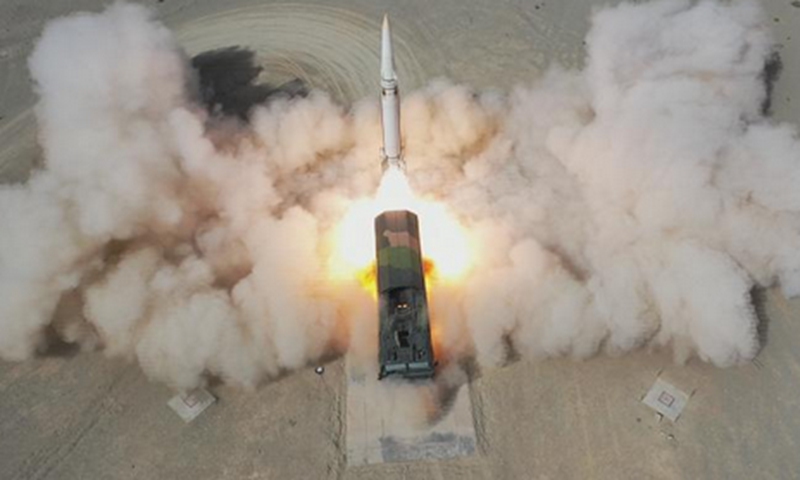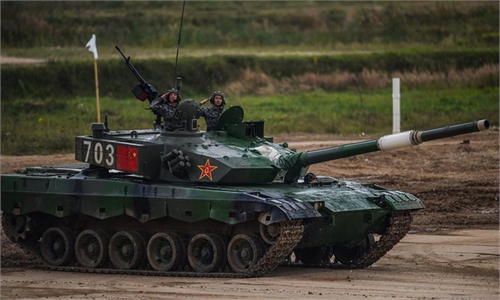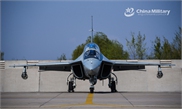
The 1st Conventional Missile Brigade attached to the PLA Rocket Force recently launched two new-type missiles in a confrontational exercise held in deserts in Northwest China. Photo: Screenshot from China Central Television
The Chinese People's Liberation Army (PLA) Rocket Force recently conducted live-fire drills in the deserts in Northwest China in which it launched two new-type conventional short-range missiles that accurately hit "hostile" defense nodes despite them being well protected.
This means the new missiles can paralyze entire hostile systems by pinpointing key hostile facilities, and they could play a vital role in safeguarding national sovereignty and territorial integrity including Taiwan, observers said on Saturday.
Under harsh natural environment and complex electromagnetic jamming, the 1st Conventional Missile Brigade attached to the PLA Rocket Force launched two new-type missiles in a rapid-reaction confrontational exercise, accurately hitting well-protected "enemy" defense positions hundreds of kilometers away, and effectively paralyzing the opponents' key information nodes in their defense systems, China Central Television (CCTV) reported on Saturday.
The launches show that the PLA Rocket Force has expanded its arsenal with the new-type advanced warheads, and enhanced the capabilities of conventional missiles in striking with precision in different situations, paralyzing key hostile nodes and destroying "enemy" target, CCTV said.
Judging from the report footage and the narration, the new-type missiles seem to be of a new variant of the DF-15 short-range ballistic missile family, upgraded with two new advanced warheads, observers said.
A ballistic missile consists of the missile body and the warhead. For the new missile launched in the exercises, while the missile body uses available, mature technologies, the warhead uses new technologies which could feature new guidance systems and stronger anti-jamming functions, Song Zhongping, a Chinese military expert and TV commentator, told the Global Times on Saturday.
By pinpointing key hostile facilities, the missile can paralyze entire hostile systems, providing an important tactic to the PLA, Song said, noting that the exercises proved the new missile is combat-ready.
Using road-mobile missile vehicles, the brigade troops took advantage of nighttime for fast maneuvering, and after receiving orders to launch, the troops took half the time to initiate the launch sequence when compared to past records, CCTV report said.
Song said that this means the missile is capable of fast-reaction and has higher levels of automatization, informatization and intelligentization.
On Tuesday, the PLA Eastern Theater Command dispatched warships, anti-submarine warfare aircraft and fighter jets in maritime and aerial areas near the southwest and southeast directions of the Taiwan island for military drills including joint live-fire assaults.
Analysts predict that a potential PLA reunification-by-force operation on the island would start with electromagnetic and cyber warfare, followed by intense missile attacks, and air and sea assaults, before amphibious landing begins.
The PLA Rocket Force will make use of the new missiles, along with all other missiles it has at its disposal, in a potential conflict across Taiwan Straits, against not only secessionist forces, but also foreign interventionist forces, Song said.
The PLA Rocket Force also operates the DF-17 conventional missile, which made its debut at the National Day military parade on October 1, 2019 in Beijing. The DF-17 is believed to be a world-class hypersonic glide maneuverable missile that current missile defense systems have minimal chances to intercept.




